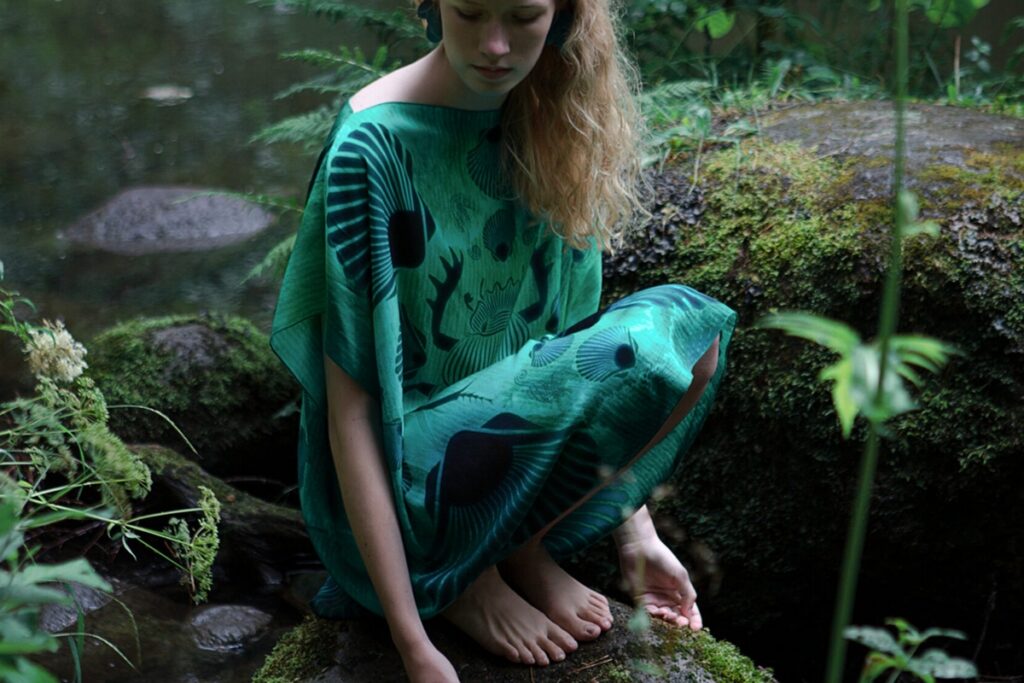Taevaskoja is more than just a hiking destination. It is a place where Estonia’s story unfolds layer by layer. Here, natural wonders meet human history: sacred sites of ancient Estonians, hideouts of the Forest Brothers, traces of Soviet industrialization, and modern-day eco-adventures. A walk through Taevaskoja is like a journey through time – every bend in the river and forest edge holds a piece of Estonia’s spirit.
The Distant Past – Taevaskoja as a Sacred Site – Taevaskoda kui pühapaik
Taevaskoja was a sacred place for ancient Estonians. The Great and Little Taevaskoja cliffs are nearly 400 million years old. According to folklore, they were places for war councils and rituals. Even today, the acoustics and silence at the Great Taevaskoja cliff are held in reverence – whispers here were said to carry far.
Legends tell of a maiden weaving in the Neitsikoobas (Virgin’s Cave), appearing on Midsummer's Eve. The Emaläte spring was believed to bring happiness and fertility to couples. These stories give us a sense of the spiritual and cultural weight of the landscape.
In later times, Taevaskoja became a picnic spot for manor nobility. These were manor forests, and ordinary people weren’t allowed to roam freely. Hikers and holidaymakers only began visiting in greater numbers in 1931, after the railroad from Tartu was completed.
1940s–1950s – Forest Brothers' Hideout
After WWII, many Forest Brothers found refuge in the forests of Taevaskoja. Among them was Jaan Roots, one of Southern Estonia’s most well-known partisans. He lived for years in the surrounding woods, hiding and moving while Soviet forces searched for him across the country. Eventually, his bunker was found and destroyed. punker muidugi leiti ja hävitati.
Today, the site of the bunker is marked and still visible in the landscape. It stands as a quiet but powerful memorial to Estonia’s resistance and to those who chose the silent, determined path of freedom.
1950s–1970s – Electrification and Environmental Change
Soviet rule brought industrial disregard to Taevaskoja. Bulldozers arrived, building a dam that destroyed a beautiful stretch of rapids. As the water rose, it submerged several unique sandstone formations – nearly 28 "taevaskoda" were lost beneath the surface.
Today, the reservoir is part of the visitor experience (for example, on boat trips with the riverboat Lonny), but it also remains a stark reminder of how a technocratic worldview reshaped the natural landscape. jõelaev Lonny sõidud), ent samas ka selge meeldetuletus, kuidas tehnokraatlik maailmavaade muutis loodusmaastiku olemust.
Today – Hiking Trails and Nature Adventures
The Taevaskoja region offers hiking trails for both peaceful strolls and longer treks. All paths pass through the ancient Ahja River valley, blending nature and culture: forests, cliffs, springs, and places rich with legend.
Taevaskoja Trail (3 km)
A popular loop starting from the Saesaare parking area, running along the river past the Great and Little Taevaskoja cliffs, the Emaläte spring, Virgin’s Cave, and other well-known sites. The return follows a forest path on the opposite riverbank. Suitable for all ages and fitness levels.
Taevaskoja–Kiidjärve–Taevaskoja Trail (approx. 12 km)
A longer loop connecting Taevaskoja and the Kiidjärve Visitor Centre, following both sides of the river and showcasing diverse landscapes and rest areas. Ideal for those seeking a deeper nature experience.
Taevaskoja–Otten–Taevaskoja Trail (approx. 4 km)
A shorter but rich trail along the Ahja River to the Otten Bridge and back. Includes both natural and cultural landmarks, including film locations from The Last Relic.
More Ways to Explore
In addition to canoeing on the Ahja River, visitors can try snowshoe hikes in bogs, kick-sledding or scooter trips in the area, and join guided walks or team-building activities. The Kiidjärve Visitor Centre introduces the natural and cultural heritage of the Ahja River valley and offers practical information for hikes and outdoor activities.

